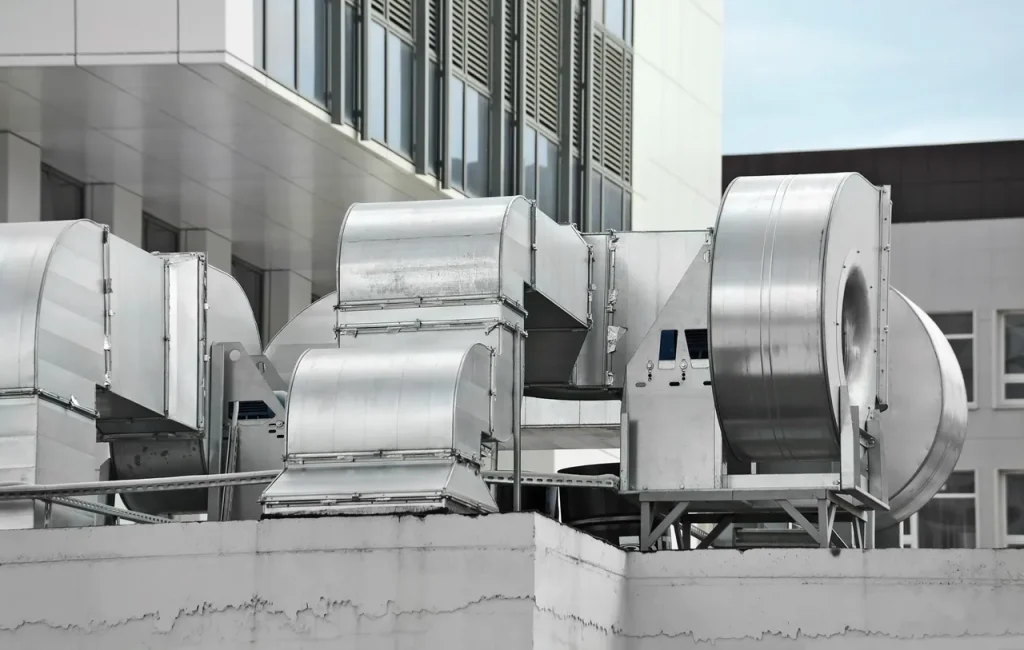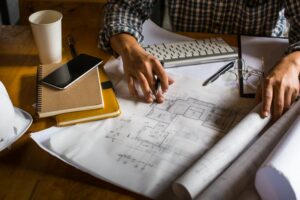MEP engineering services for building design refer to the specialized fields of mechanical, electrical, and plumbing engineering that are crucial to the design and construction of buildings. These services ensure that the systems within a building are properly designed, installed, and maintained for optimal performance and safety.
What is the importance of MEP in building design?
The importance of MEP engineering in building design cannot be overstated. Here are just a few:
Energy efficiency
Properly designed and installed MEP systems can significantly contribute to a building’s energy efficiency. For example, using energy-efficient HVAC (heating, ventilation, and air conditioning) systems and lighting can reduce a building’s energy consumption, leading to lower energy bills and a smaller carbon footprint.
Safety and comfort
MEP systems help ensure building occupants’ safety and comfort by providing clean air, proper lighting, and temperature control. For example, proper ventilation helps to prevent the buildup of harmful gases and pollutants, while proper lighting helps to prevent accidents and improve productivity.
Building functionality
MEP systems are essential for the overall functionality of a building. For example, a building’s electrical system powers everything from lighting and appliances to elevators and security systems. A building’s functionality would be severely impaired without a reliable electrical system.
Future expansion
Properly designed MEP systems can also facilitate future expansion and renovations. For example, if a building is designed with the capacity to support additional electrical and plumbing systems, it will be much easier to add new floors or wings in the future.
From heating, ventilation, and air conditioning (HVAC) to lighting and power distribution, these systems play a vital role in the functionality and comfort of a building. A poorly designed or improperly installed MEP system can lead to costly repairs, inefficient energy use, and potential safety hazards.
Mechanical Engineering Design
Mechanical engineering design for buildings involves a wide range of tasks and considerations that are essential for the construction and operation of any building such as:
HVAC systems
Mechanical engineers are responsible for designing the heating, ventilation, and air conditioning systems in a building. This involves determining the appropriate size and type of equipment needed and ensuring that the system is energy efficient and meets all necessary codes and regulations.
Plumbing systems
Mechanical engineers also design plumbing systems in buildings, including water supply, drainage, and sewage systems. They must ensure that the systems are properly sized and that all pipes and fittings are properly installed and maintained.
Elevators and escalators
Elevators and escalators are integral to many buildings, and mechanical engineers are responsible for designing and maintaining these systems. This includes determining the appropriate size and capacity of the equipment and ensuring that it is safe and reliable for use.
Structural support
Mechanical engineers also play a key role in designing building structural support systems, including the foundation, framing, and load-bearing walls. They must ensure that the building is strong enough to withstand the forces of nature and other external loads and that it is safe and stable for occupants.
Building controls
Mechanical engineers also design and install building control systems, which are used to monitor and control various systems within a building, such as lighting, temperature, and security. These systems are essential for ensuring that a building is safe and efficient, and they can also be used to reduce energy consumption and operating costs.
The role of mechanical engineering design in building design is to ensure that these systems are properly designed and installed to meet the needs of the building and its occupants. This includes considering factors such as the size and use of the building, as well as local building codes and regulations.
Electrical Engineering Design
Electrical engineering design involves installing, installing, and maintaining electrical systems within a building. This includes lighting, power distribution, and communication systems.
Proper lighting is essential for the functionality and safety of a building. Electrical engineering design takes into account the type and placement of lighting needed for different areas of the building. Power distribution systems ensure that electricity is safely and efficiently distributed throughout a building. Communication systems, including phone and internet lines, are also important for building functionality.
Here are some of the key aspects of this process:
Electrical load calculation
Before any electrical design work can begin, it is necessary to determine the electrical load that the building will require. This involves calculating the power needs of all the electrical devices, appliances, and systems used in the building, including lighting, heating and cooling, and communication systems.
Wiring design
Once the electrical load has been calculated, the next step is to design the wiring systems that will distribute power throughout the building. This includes determining the appropriate wire sizes, conduit sizes, and circuit layouts and ensuring that all wiring meets local building codes and safety standards.
Power distribution design
In addition to wiring, electrical engineers must also design power distribution systems to supply electricity to the building. This includes the selection and placement of transformers, switchgear, and other electrical components, as well as the design of emergency power systems.
Lighting design
Lighting is a crucial element of any building design, and electrical engineers must consider both functional and aesthetic requirements when designing lighting systems. This includes selecting appropriate light fixtures and lamps and calculating the number and placement of lights to ensure adequate illumination.
Communication and control systems
Modern buildings often rely on a range of communication and control systems, such as security systems, fire alarms, and HVAC controls. Electrical engineers must design these systems to ensure they are reliable, efficient, and easy to use.
Plumbing Engineering Design
Plumbing engineering design deals with the design, installation, and maintenance of plumbing systems within a building. This includes water supply, drainage, and gas piping systems.
Proper water supply and drainage systems are essential for the functionality and hygiene of a building. Plumbing engineering design takes into account the size and use of the building to ensure that these systems are properly designed and installed. Gas piping systems are also important for building functionality, and proper design and installation ensure the safety of building occupants.
Conclusion
MEP engineering services for building design are essential for properly installing, installing, and maintaining the mechanical, electrical, and plumbing systems. These services ensure the functionality, efficiency, and safety of a building and its occupants.
It is important to hire a qualified MEP engineering firm for building design projects to ensure that the systems within the building are properly designed and installed. Contact Superb Engineer team for MEP engineering services for your next project.



